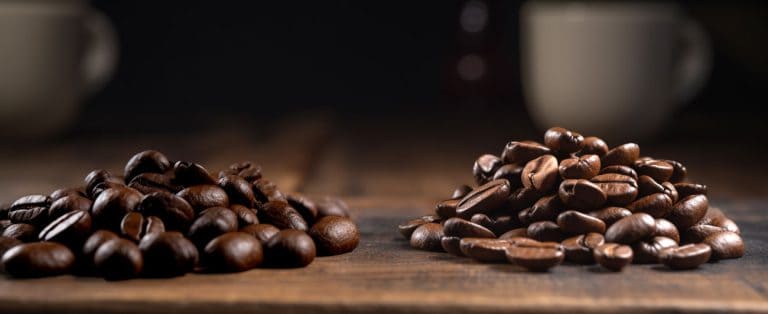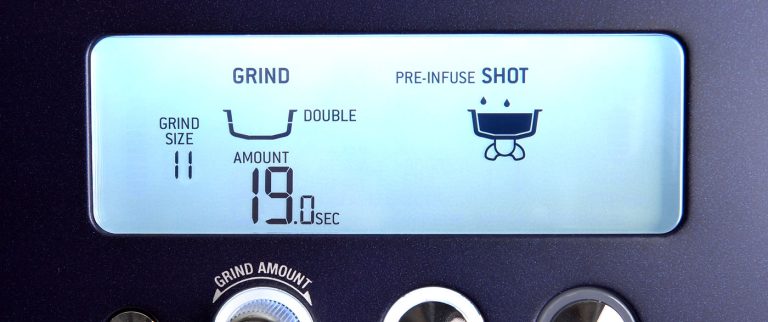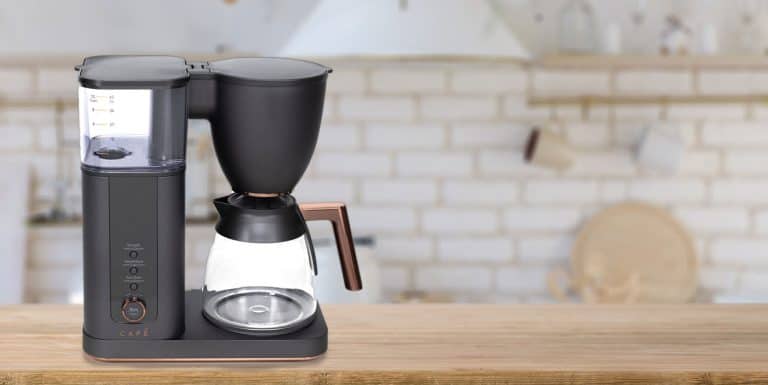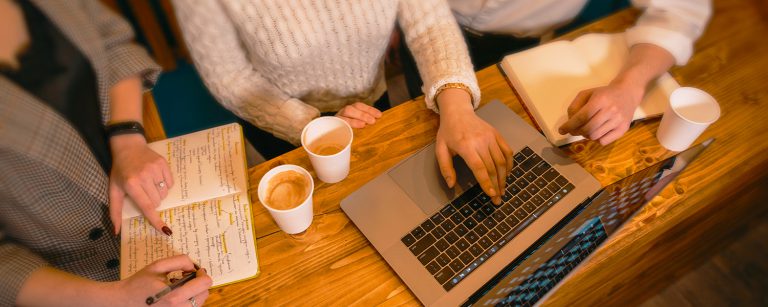What’s the Best Water Temperature for Espresso Extraction?
Pulling that perfect shot of espresso is a major step to becoming a great barista, wouldn’t you agree? But you may not know, that one of the key factors to achieving perfection is using the right brewing water temperature.
This is a more advanced topic that you may not have heard of before, but this variable can really make or break your final drink.
To help guide you on your coffee-making journey, I’ll share with you everything you need to know about finding and using the optimal temperature of water when brewing this crema-crowned drink.
So, if want to learn how to truly ace your espresso, then keep reading.
So, What’s The Best Brew Temperature for Espresso?
Temperatures between 195°F and 205°F (90°C to 96°C) are the most ideal for brewing espresso. Some baristas might give more leeway between these temperatures, but in my years brewing this drink, I’ve found that sticking to these would produce a great cup.
The water temperature should be precise enough to extract all of the desirable flavors from your coffee grounds. Going too hot will result in an over-extracted or bitter espresso while going too cold will yield under-extracted or sour coffee.

Warmer & Colder Water Depending on Roast Type
You may have noticed that 90°C to 96°C is not a precise number. Why? Because as a good barista, you need to be able to judge when you need to tip towards the warmer end of the range or the cooler.
If you are using light roast coffee, you need to work extra hard to extract all of that coffee goodness. This means you need to go towards the higher end of the range, around 94°C to 96°C. These are my favorite light roast coffee beans in 2024.
Vice versa, if you are using dark roasts, you can dial the temperature down to 90°C to 92°C, which prevents over-extraction and bitter coffee. Here are my favorite dark roast coffee beans this year.
Maintaining the Temperature During Brewing
Consistent and controlled extraction requires careful attention to detail when regulating the temperature during espresso brewing.
- In every basic espresso machine, you have a thermostat to help you in this endeavor. It monitors the water temperature and controls the heating element automatically. When the water temp is low, it turn on the heat. When the water reaches the target temperature, the heating element is turned off.
As you can guess, this isn’t a 100% exact process, as it comes with “large” drops and spikes of temperature. - The temperature of the brewing water starts dipping as soon as it exits the group head. Using a preheated portafilter really helps maintain the temperature of the espresso during the brewing process. I’ve done many “experiments” where I forgot to heat the portafilter, and you can really tell by the taste of the coffee that something was off from what I had dialed in previously.
What is a PID (Proportional Integral Derivative)?
High-quality (and pricey) espresso machines are fitted with more than just a thermostat. They use a PID (Proportional Integral Derivative) temperature controller and the PID algorithm to regulate the temperature of the water much more precisely than a standard thermostat.
It works by continuously monitoring the temperature of the water and adjusting the heating element to maintain a consistent temperature.
It has three components:
- Proportional Control: This component considers the difference between the desired temperature and the actual temperature of the water.
- Integral Control: This component considers how long the temperature has been off the set point. The longer the temperature has been off the set point, the greater the amount of heat applied to the water.
- Derivative Control: This component considers the rate of change in temperature. If the temperature is changing rapidly, the PID controller will adjust the heating element accordingly.
By combining these three components, the PID controller can maintain a consistent temperature of the water, thus you can pull consistent high-quality espresso shots.
Thermostat vs PID Controller
I’ve often been asked by budding baristas, what machine should they choose between a standard espresso machine and one with a PID temperature controller. The price gap isn’t measly after all, since the cheapest PID-controlled machines start at around $2000, whereas a Breville Bambino Plus costs $500.
I always discuss with them the advantages and drawbacks of the two to help them decide, with emphasis on the difference in temperature regulation, as you can see on this graph by La Marzocco.
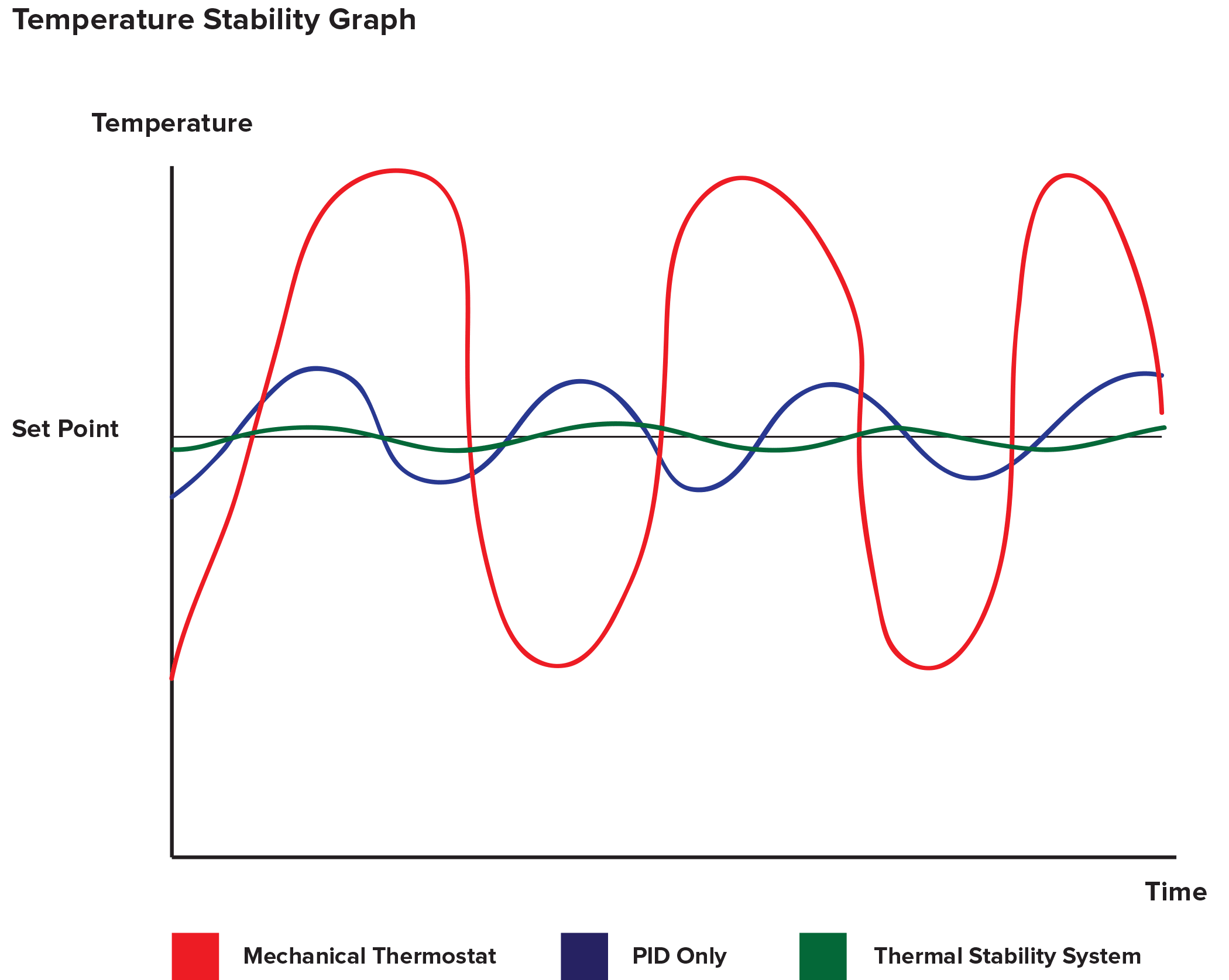
Here’s a breakdown of their pros and cons:
| Device | Pros | Cons |
|---|---|---|
| Thermostat | – Simple to use – Inexpensive – Good for basic temperature control | – Limited control over temperature fluctuations – Not suitable for complex systems |
| PID Controller | – Precise temperature control – Adaptable to changing conditions – Can handle complex systems | – Much more expensive than a thermostat – Requires tuning for optimal performance – More complex to use than a thermostat |
But my more direct answer to the question is: If you have the budget, you should definitely pick an espresso machine with a PID controller. The precision it gives to your brewing really makes a difference, and can finally mean you’ve graduated from a home barista to a full-fledged coffee nerd 🙂
If you’re tight on the budget or just starting out, start with the thermostat models though. They still give you a great espresso that other brewing methods cannot replicate.
Understanding Temperature Surfing for Perfect Extraction
To get the best shot of espresso, it’s important to know when and how to adjust the temperature.
Here’s where temperature surfing comes in, which basically means doing a few trial runs to find the sweet spot in terms of the water temperature that exits your machine. Note that temperature surfing focuses on the final temperature of the shot when it comes out of the group head, instead of when it is still inside the machine.
Here are the steps to temperature surf:
- Turn on your espresso machine and allow it to heat up to the desired temperature. This can take anywhere from 10-30 minutes depending on the specific machine (or just 3 seconds with Brevilles Thermojet system)
- Once the machine is heated up, pull a shot of espresso without the portafilter, and use a thermometer to measure the temperature of the shot. This first shot will be used to gauge the temperature of the machine and make any necessary adjustments.
- If the temperature is too low, turn up the temperature on the machine and allow it to heat up for a few minutes before pulling another shot and measuring the temperature again. If the temperature is too high, turn down the temperature and repeat the process.
- Continue to pull shots and adjust the temperature until you have achieved the desired temperature range for your espresso.
- Once you have achieved the desired temperature and shot quality, continue to monitor the temperature throughout the day and make adjustments as needed.
Temperature surfing can be a time-consuming process, but it is essential for producing consistent and high-quality espresso.
You will still be able to pull a decent shot without this, but if you want perfect, you need to pay attention to even the smallest details. 90°C will not do when you’re aiming for a 95°C temp for light roasts.
More Factors That Can Affect Your Espresso
Still can’t achieve the proper taste of your espresso even when you have the temperature right? There are other factors that might be affecting your resulting drink:
- Coffee bean quality
- Roast level
- Grind size
- Water quality
- Brew time
- Pressure
Check out my guide on dialing in an espresso to help you get these variables right the next time you pull your espresso shot.
And after you learn to make a proper espresso, you can even use it to make milk+espresso drinks like these:
Frequently Asked Questions (FAQs)
If it’s too hot, the coffee can become bitter and burnt. On the other hand, if it’s too cold, it can make the espresso taste weak and sour.
Yes. Overheating can cause internal components to warp or break, while using water that’s too cold may require longer extraction times and strain the machine’s pump.
When brewing espresso at home, factors beyond water temperature can impact its quality. The size of your ground coffee, tamping pressure, and bean freshness can play a crucial role in achieving the perfect extraction yield. Prioritize these variables to ensure a flawless cup of espresso with its beautiful crema every time.
I don’t recommend preheating your espresso cups because adding more heat to your coffee will make its flavors harder to recognize. You can consider doing this if you’re saving your coffee for later or if you’re making an espresso-based drink such as a latte or cappuccino, where the steamed milk can contribute to cooling down the espresso much faster.
Conclusion
Now you know that temperatures between 195°F and 205°F (90°C to 96°C) are best for brewing espresso. While it might seem like a lot of trouble, discovering and maintaining the optimal brewing temperature, it is exciting and very rewarding.
So go ahead, break out your espresso machine, and start tinkering with those settings.


